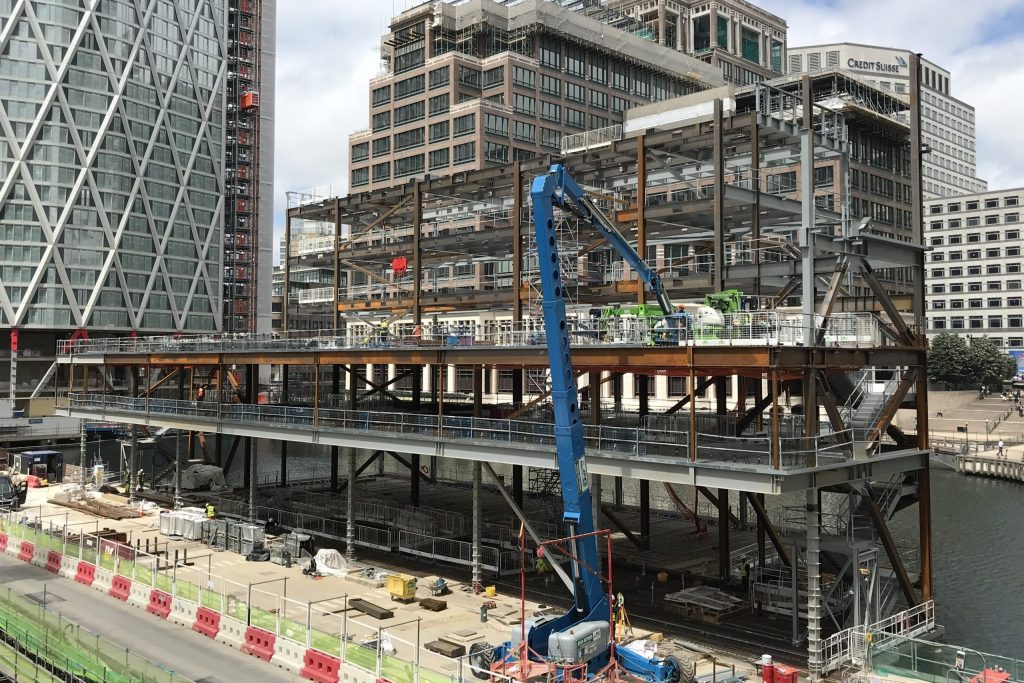As the amount of workable, spacious land worth developing decreases, location restrictions are becoming less of a factor for construction projects.
Which mean it’s more a case of how, rather than whether, to construct a unique or challenging development.
Whether it’s building in a tight space, over water or by live sites, the ‘how’ is best answered with a construction strategy underpinned by meticulous planning, supplier expertise and collaboration.
Tricky projects, whether restrained by the surroundings of a site or the requirements of a main client, require a project team – sub-contractors as well as main contractors – involved in strategic planning from the off. Whether suppliers are undertaking groundworks, steelwork or cladding, early involvement of these experts is likely to reduce running times and overall construction costs.
Working on a number of live sites over the years, including schools and hospitals, we have installed structural steelwork and frames within narrow constraints. So when delivering a project that’s unique or challenging there are a number of steps we recommend when devising the construction strategy:
- Ensuring early involvement – This is central to delivering on difficult or different developments. It’s widely accepted that the best sub-contractors are those who are committed to a project from conception and planning right through to completion. But the benefits of this can only be enjoyed if main contractors bring others in early on, to utilise expertise and boost efficiencies.
Main contractor ISG says that overlooking suppliers or sub-contractors at “key stages of the construction process” risks missing out on “mutual efficiencies”, as reported by Construction Week.
- Understanding constraints – Constraints to a project can be around location, such as site access or neighbouring properties, or time, such as allocated operating hours or deadlines. Location requirements will be best adhered to with plenty of time to consider things like alternative routes or ways of working. Similarly, time requirements are more likely to be met if all parties are aware of them early on, allowing for things like early procurement of critical materials.
For example, working on a development erected in-part over water, at London’s Canary Wharf, we used floating pontoons to grant access to the parts of the structure standing on marine piles. Similarly, working on a new office development for Network Rail, in Doncaster, we devised alternative access routes to site, to ensure an efficient delivery schedule and avoid obstacles and weight restrictions along the more obvious routes in.
- Identifying risks – Close collaboration and comprehensive information-sharing will allow sub-contractors to identify any risks, such as safety hazards or clashes during build.
Working with BAM Construction, we fabricated and installed the steelwork at Leeds General Infirmary in close proximity to a working theatre and MRI scanners. Meticulous planning and a clear understanding of risk were essential to ensure no steelwork entered the fields created by the MRI scanners, which extend beyond the buildings.
Similarly, working on Aintree University Hospital, our operational and logistics planning was fine-tuned to reduce disruption and noise pollution as we developed a new urgent care and trauma centre connected to the live hospital.
- Planning the build – Early involvement will allow sub-contractors to begin their own planning early, such as around temporary bracing during erection, and coordinate timings and additional suppliers.
Also on the Leeds General Infirmary project, the fourth-storey development – an extension to an existing area of the hospital supported by 18m high raked steel columns – had to be carefully planned for temporary bracing to support the structure during erection.
Whether a project is restricted by the site’s surroundings or the main client’s ongoing operations, ensuring early involvement from sub-contractors, to work through the steps recommended, will deliver the desired outcomes for all involved.

